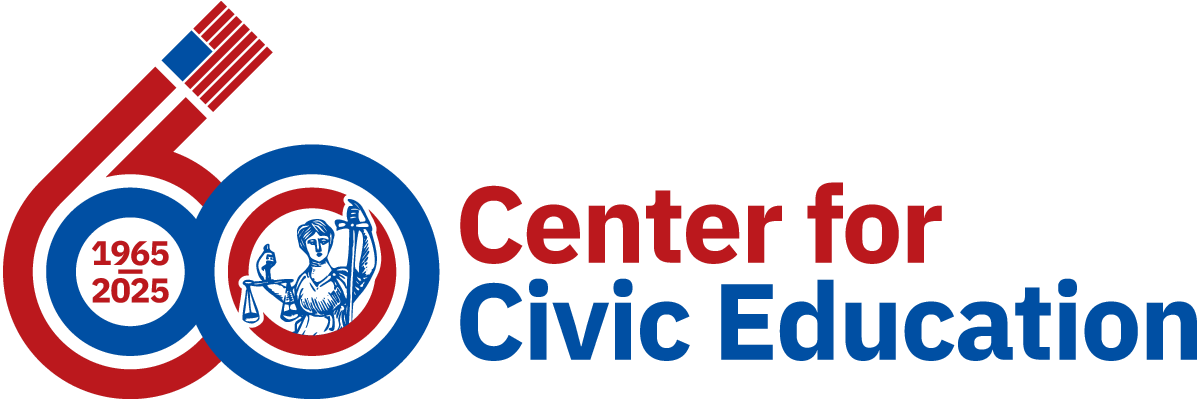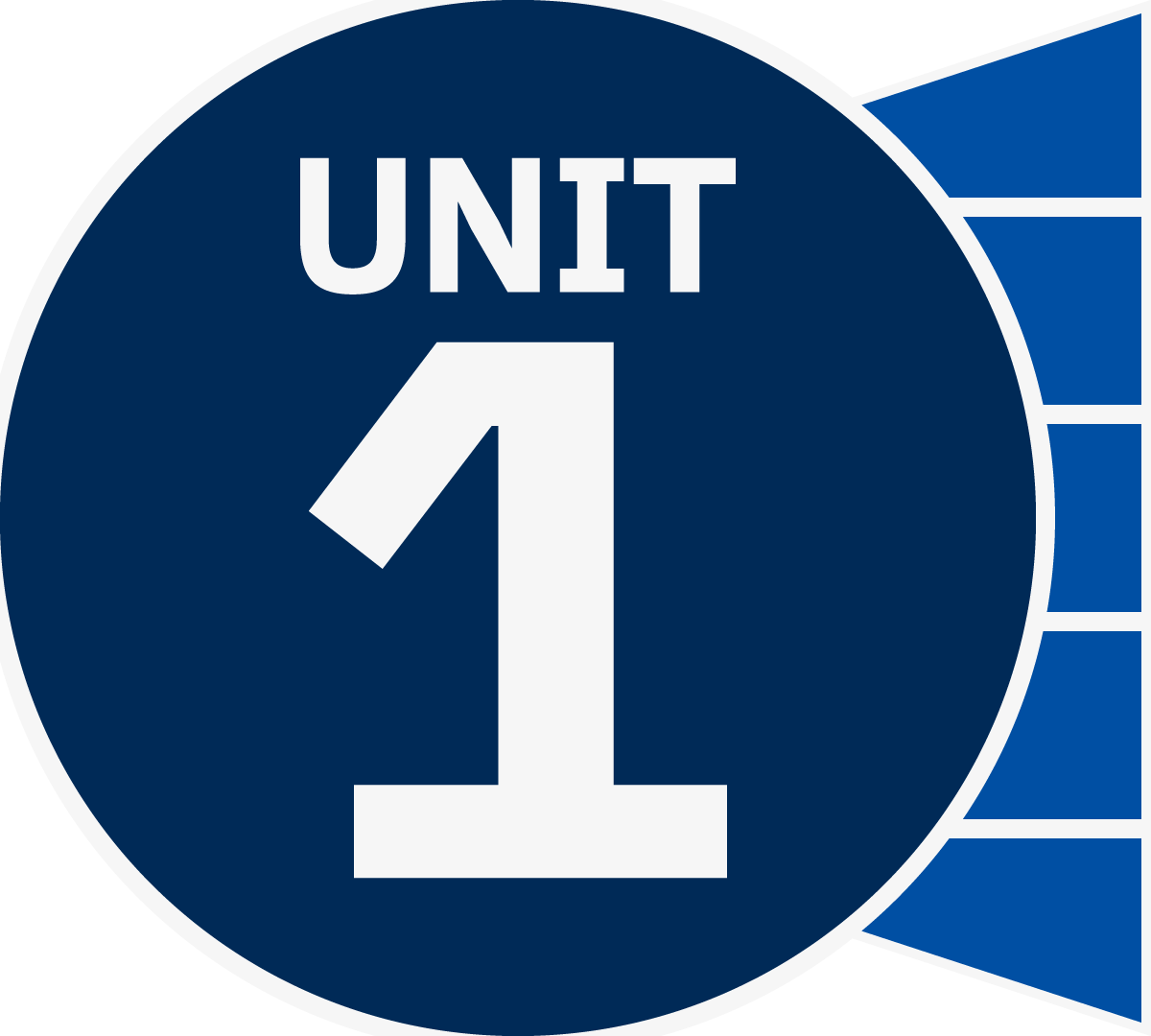Inquiry Companion: Unit 1
In Unit 1 of the We the People: The Citizen & the Constitution textbook, students examine how early Americans embraced the philosophy of individuals’ natural rights, charting the course for independence and laying the foundations of a constitutional government.
How is the Inquiry Companion Structured?
Students will engage by discussing the need for rules and laws, explore the voices of unheard perspectives through primary documents, and explain the roots of democracy in the Haudenosaunee Great Law of Peace. Students then elaborate on their understanding of individual rights versus the common good via a simulation activity. Finally, students will evaluate their new knowledge by crafting a fable to answer whether the American Revolution could have been avoided.
Best practices for culturally responsive teaching weave through each activity.
Inquiry Guide Activity
Students deepen constitutional knowledge and civic dispositions by elaborating on new understandings through democratic experiences, such as role plays, games, and conceptual simulations.
In this lesson, students will decide between individual rights and the common good for their class by choosing an amount of candy. After playing the game, they will make connections to natural rights philosophy, classical republicanism, human nature, and the need for government through class discussion and a group shared-reading activity.
Utilize this Explain strategy activity to enhance students’ understanding of the We the People: The Citizen & the Constitution textbook section Level 3, Unit 1, Lesson 2 or Level 2, Unit 1, Lesson 2 and Lesson 3.
We the People: The Citizen & the Constitution (Level 3)
- Unit 1, Lesson 2: What Ideas about Civic Life Informed the Founding Generation?
- Unit 1, Lesson 2: Why do we need government?
- Unit 1, Lesson 3: What is republican government?
- Active learning
- Civic virtue
- Human nature
- Relationship skills
- Responsibilities
- Rights
- Social contract
- Participate in a democratic experience on civic virtue and individual rights
- Investigate natural rights philosophy and classical republicanism
- Answer our inquiry question: Can we simultaneously honor individual needs and the common good? Defend your answer with evidence from the reading and our activity.
- Can we simultaneously honor individual needs and the common good?
- Several bags of jellybeans (or other small tokens)
- Ballots/slips of paper
- Ballot box (or basket)
- U1 Elaborate Natural Rights Organizer
- Democratic Experience Debrief
- We the People: The Citizen & the Constitution Textbook
- classical republicanism The ideals and practices of ancient Greek or Roman city-states that emphasized civic participation and the responsibility of citizens for the well-being of their country. Acts by citizens that placed the public good, or common welfare, above private interest were especially prized.
- common good The good of the community as a whole, as contrasted with private interests that may conflict with public interest. Also known as the public good.
- consent of the governed Agreement by citizens to obey the laws and the government they create. Consent is the source of a government’s legitimacy.
- natural rights The idea that people have basic rights, such as life, liberty, and property in a state of nature. Some writers, especially those influencing the American Founders, argued that certain rights are inalienable—a part of being human—and that people create governments to protect those rights.
- social contract An agreement among the people to set up a government and obey its laws. The theory was developed by the English natural rights philosopher John Locke, among others, to explain the origin of legitimate government.
- state of nature A situation where people are living without government. This is also known as anarchy. Natural rights philosophy was concerned with what rights, moral rules, or laws applied in such circumstances and what rights, if any, people kept after agreeing to leave the state of nature to form a politically organized society or state.
Engage students in handling a social dilemma, a situation in which an individual from a group faces a decision or a choice that would have immediate rewards for themselves but would affect the group (i.e., a negative outcome for the group) or making a choice that would deny immediate benefits for themselves to obtain a positive outcome for the group.
Students are oriented to distinguish between an action that gives them instant gratification but could have consequences for their classmates, friends, or fellow citizens or another action in which they thoughtfully consider the welfare of others despite minimum rewards for them individually.
Teachers may find additional background on natural rights, classical republicanism, and civic virtue from the following sources:
- How do rights in the Constitution reflect the influence of classical republicanism and natural rights? (Video)
- Which philosophy studied by the Founders was most influential on American political thought? L2S3 (Video)
- How can civic virtue and self-interest co-exist? L33S2 (Video)
- Natural Rights Philosophy in the Declaration: Ideas that Informed the American Founders, Part 24 (Video)
- Classical Republicanism: Ideas that Informed the American Founders, Part 14 (Video)
- Civic Virtue, Moral Education & Small, Uniform Communities: Ideas that Informed the Founders Part 23 (Video)
- Civic Virtue and Self-Interest (Video)
- Cincinnatus and Civic Virtue (Video)
Teachers should preview all student materials and resources before the lesson.
Part I
- Welcome students to social studies.
- Introduce the inquiry question: “Can we simultaneously honor individual needs and the common good?
- Allow students time to make a prediction about the inquiry question and offer their supporting questions.
- Students are instructed to ask for a small number of jellybeans (e.g., 5) or a larger number (e.g., 15). They are to be informed before requesting the number of jellybeans desired that if 15 percent or more of the class asks for the larger number, nobody gets any jellybeans. If fewer than 15 percent of the class asks for the larger number of jellybeans, those individuals get the larger number of jellybeans while the rest of the class gets the smaller number of jellybeans.
- For example, if the total number of students in a class amounts to 28, and 4 students ask for a larger number of jellybeans, no one gets any candy. If fewer than four students request 15 jellybeans, those students each get 15 jellybeans, while the rest of the class each receives five jellybeans.
- Hand out ballots or pieces of paper. Instruct students to write their names on top of the ballots.
- Students are asked not to communicate with each other (i.e., no talking, no facial expressions, no hand signals, etc.) while completing their ballots. The idea behind restricting interaction with each other is that people are likely to perform benevolent actions or are influenced to behave in a certain way if others are watching. Hence, the concept of handling a social dilemma would be affected.
- Students are instructed to mark the number of jellybeans they want on the ballot (or piece of paper), then fold the ballots in half and place them in the ballot box (or basket).
- The teacher will count the ballots in front of the group and announce the results to the class.
- Optional: Distribute jellybeans to students, if desired.
Part II
- Encourage students to associate the activity with situations they have faced or are likely to experience in the classroom, school, at home, or during interactions with family and friends. The ideal outcome is for students to realize that in today’s society, there is a tendency to make decisions based on self-preference and that if selfish choices are made, the likely effect of that particular decision could produce perilous circumstances for others and for the decision-maker. Emphasize to students that this activity simulated the democratic experiences of civic virtue and exercising rights. Facilitate a class discussion using the following questions:
- How did you feel when making your decision? Why?
- What ideas or beliefs guided your decision?
- What is a synonym for individual gains? (Answer: individual rights)
- What is a synonym for the needs of others? (Answer: the common good)
- Can you name times you have decided between individual rights and the common good?
- What are the advantages and disadvantages of each?
Part III
- Play the Individual Rights and the American Colonies: Ideas that Informed the American Founders, Part 27 video. While students watch, tell them to listen for the three shared basic individual rights.
- Play the video a second time to ensure comprehension, if needed.
- Display the words Life, Liberty, and Property, which are the three basic individual rights.
- Allow time for a brief discussion or opportunity for students’ questions.
- Distribute the Natural Rights Organizer and review the expectations to complete Part A with the class.
- Using your normal routine for establishing groups, divide students into trio teams.
- Instruct students to collaborate in trio teams to provide examples of each concept listed in Part A of the organizer using the We the People: The Citizen & the Constitution textbook (Level 2, pages 14–18 or Level 3, pages 16–18).
- Circulate the room, encouraging each group, observing progress, and redirecting as needed.
- Review the expectations to complete Part B in their trio teams as a class.
- Instruct students to discuss each concept listed and decide if they think it is an example of life, liberty, or property. Color each box using the color key provided. Inform students that answers will vary depending upon their interpretation.
- Provide time for a brief discussion, allowing students to defend their choices on various concepts.
Extension
Discuss students' choices during the jellybean game and apply the activity to real-life situations. Encourage students to provide examples of individual rights vs. the common good that are playing out in the world today. Possible current event examples may include
- countries stocking up on biological weapons,
- entities enforcing acts of terrorism or unprovoked acts of war against innocent civilians,
- businesses falsifying financial reports so that a small number of top-level executives gain profits while the rest of the company’s employees (primarily those who are lower ranking and earn less than the executives) lose their jobs and
- residents of a particular community or neighborhood decide against recycling.
Students will demonstrate mastery of natural rights philosophy and classical republicanism by completing Part C of the Natural Rights Organizer and answering the inquiry question: Can we honor individual needs and the common good simultaneously? Students will defend their answers with evidence from the reading and our activity.
Students will also participate in self-reflection by completing the Democratic Experience Debrief.













